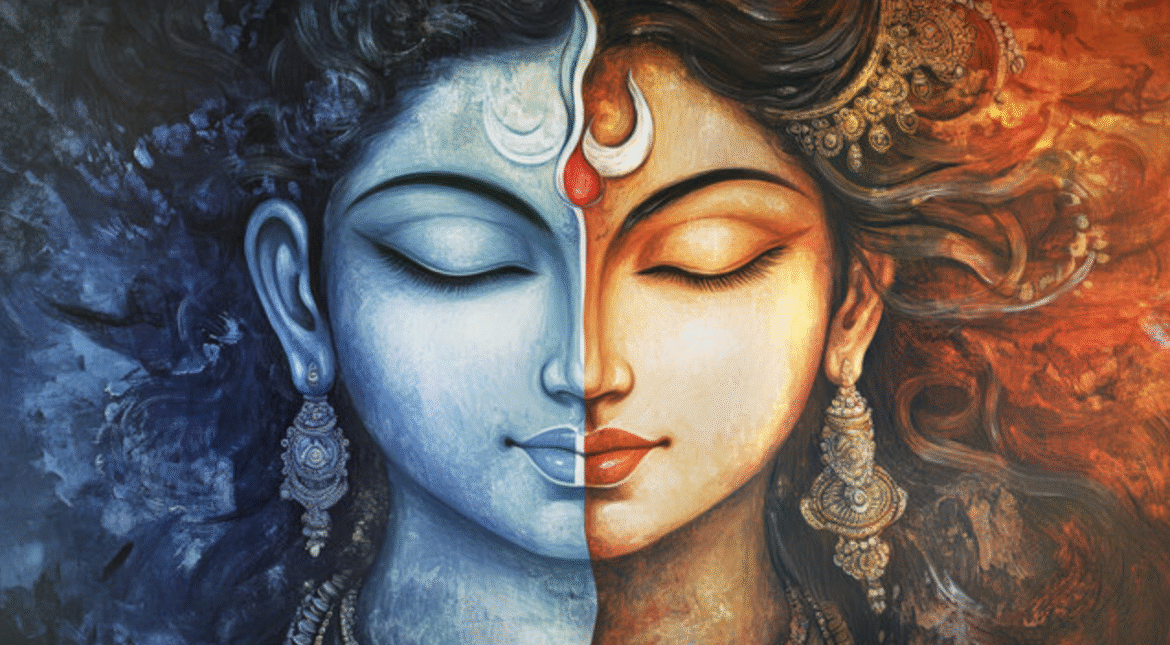The One Appearing as Two
In Advaita Vedānta, the ultimate truth is non-dual – Brahman alone exists, infinite, formless, and beyond all distinctions. Yet the universe appears as a play of duality: light and darkness, life and death, masculine and feminine. The mystery of Śiva–Śakti is how the One becomes Two without ever truly dividing.
Śiva represents Pure Consciousness – changeless, silent, absolute awareness (cit).
Śakti is the Power of that Consciousness – dynamic, creative energy (śakti) that manifests all worlds.
They are not separate deities but two aspects of one Reality: Śiva is Being, Śakti is Becoming. Śiva is the still ocean, Śakti its dancing waves.
As Kālī Tantra says:
“Without Śakti, Śiva is a corpse; without Śiva, Śakti has no ground to dance.”
This poetic paradox captures the essence of Advaita’s vision: existence is a divine play of consciousness knowing itself through creation.
The Vedāntic Lens: From Māyā to Mahāśakti
Śaṅkarācārya, though a pure non-dualist, did not reject the Divine Mother. In his Saundaryalaharī, he sang:
“Śiva becomes able to create only when united with Śakti; otherwise he is incapable even to stir.”
Here, Śakti is not illusion (māyā) in the negative sense, but the expressive power of Brahman – the mysterious Māyā-Śakti that projects the world while remaining one with the projector.
Through her, the infinite manifests as finite. The timeless becomes time. The formless takes countless forms. Yet all along, nothing truly changes, it is Brahman playing with its own reflection.
Inner Union: The Yogic Realization
In Yoga and Tantra, the meeting of Śiva and Śakti happens within.
Śakti sleeps coiled at the base of the spine as Kuṇḍalinī. Śiva resides at the crown as pure awareness.
The ascent of Śakti through the chakras is the awakening of consciousness itself, the merging of energy and awareness, the individual (jīva) dissolving into the cosmic (Śiva).
When this inner union occurs, duality ends. The seeker realizes:
“I am neither male nor female, neither body nor mind. I am That which witnesses both. I am Śiva-Śakti, the wholeness beyond all opposites.”
Symbolism Beyond Gender
Though often depicted as divine lovers, Śiva and Śakti transcend human gender.
They symbolize the balance of existence – logic and intuition, silence and expression, structure and flow.
In every being, these two currents exist. True spiritual maturity is not rejecting one but harmonizing both letting Śiva’s awareness guide Śakti’s energy.
The androgynous form Ardhanārīśvara half Śiva, half Pārvatī, represents this inner equilibrium. It reminds us that enlightenment is not masculine or feminine, but the perfect blending of both principles.
Living the Union
To live Vedānta is to embody this union to act in the world (Śakti) while resting in awareness (Śiva). Meditation without compassion becomes dry; action without awareness becomes bondage. The realized soul moves through life like a serene flame still within, radiant without.
As the Devī Gītā proclaims:
“I am both the womb and the witness, the seed and the sprout.
In me the universe arises, in me it rests, and in me it dissolves.”
This is the heart of Advaita Vedānta’s vision of Śiva–Śakti: not two powers at war, but one infinite consciousness in love with itself.


Leave a Reply